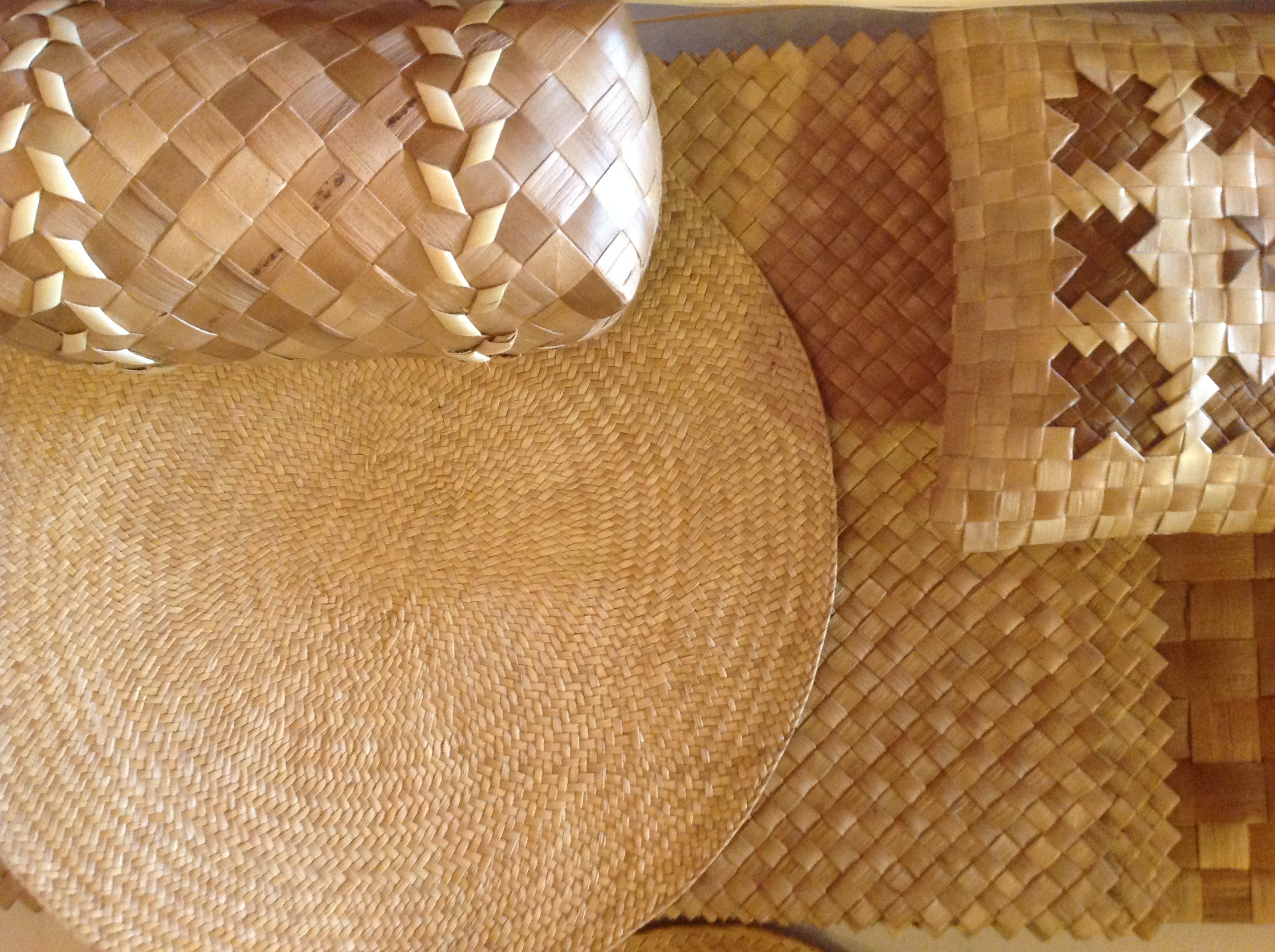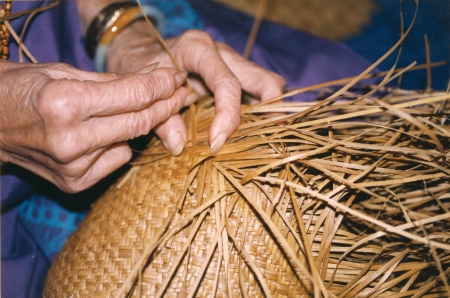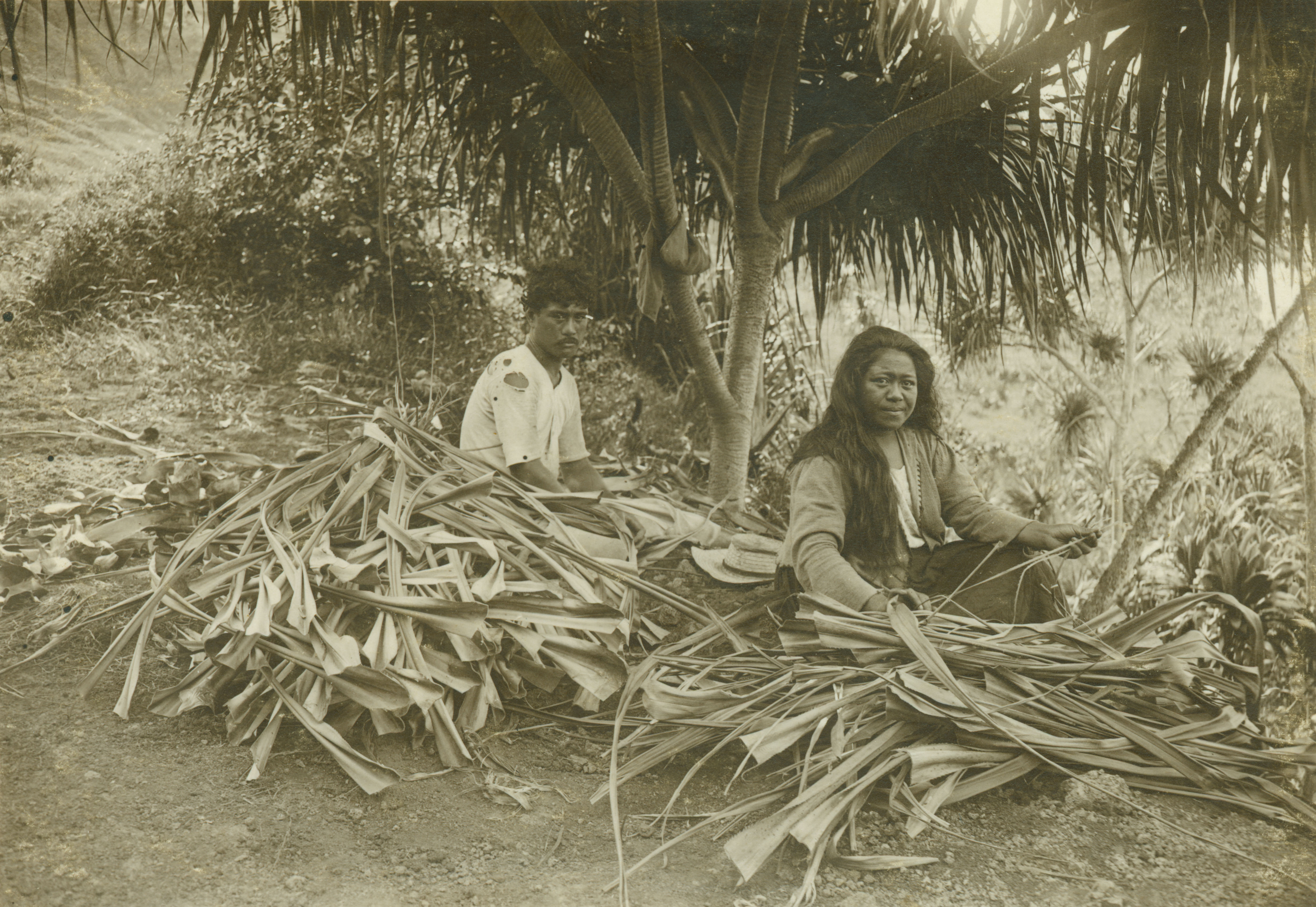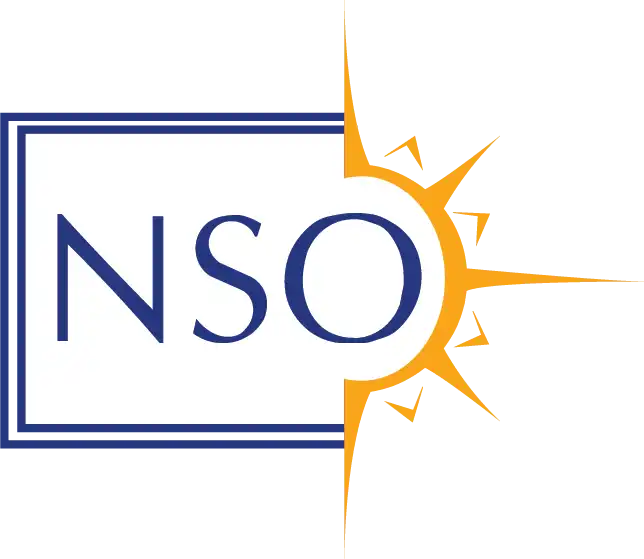Lau Hala Exhibit at Schaefer Gallery Through Dec. 20
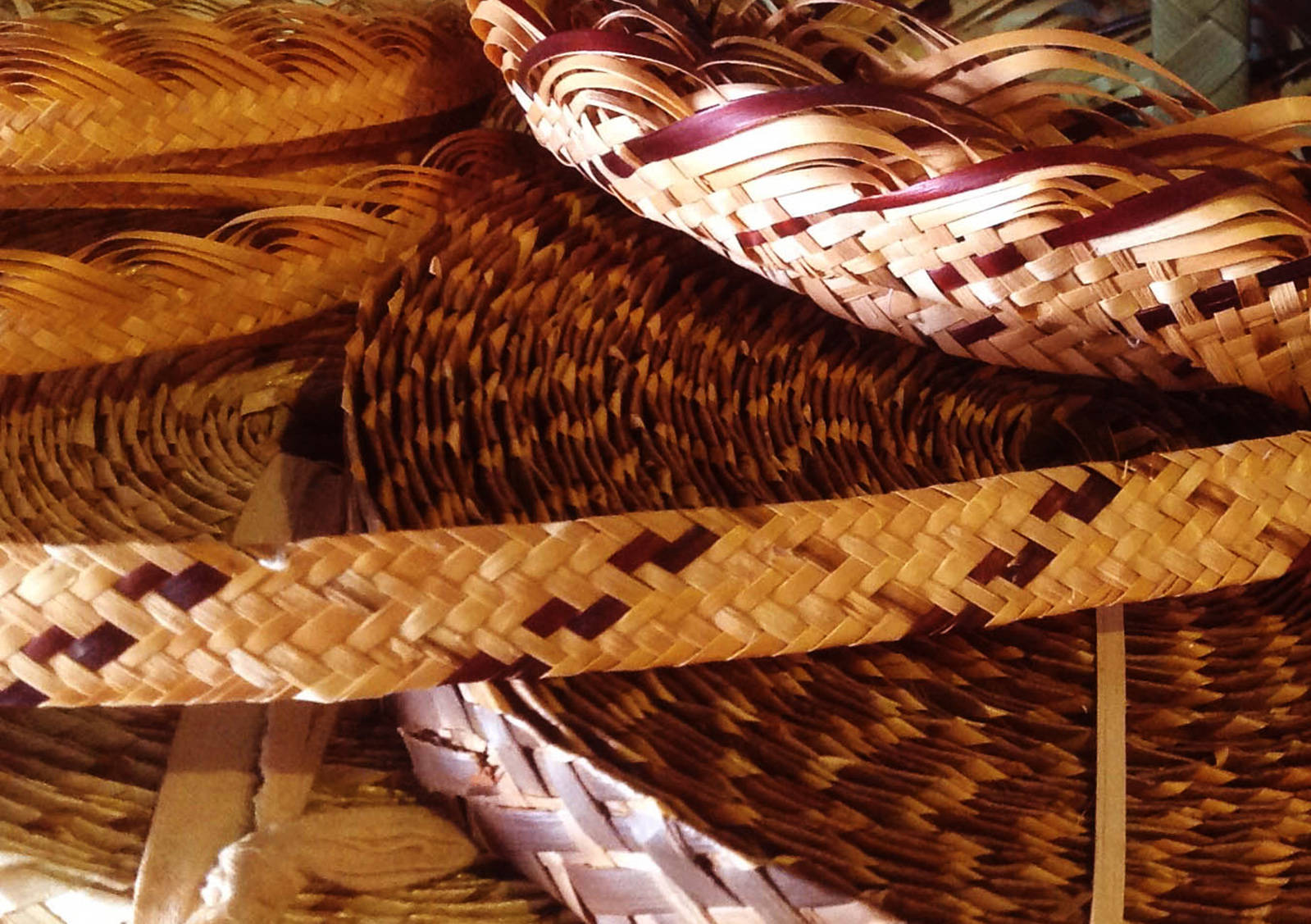
Exhibit Nani I Ka Lau Lau Hala Weaving in Hawai‘i & Ho Mai Ka Hala Bring Forth the Hala. Photo provided by The MACC.
The Maui Arts & Cultural Center and Bishop Museum’s exhibit of lau hala artifacts from the museum’s collections and the work of contemporary lau hala weavers in Hawai‘i at Schaefer International Gallery will be on display through Dec. 20.
Nani I Ka Hala: Weaving Hawaiʻi showcases the museum’s artifacts, and an accompanying concurrent invitational exhibition, Hō Mai Ka Hala: Bring Forth the Hala, organized by The MACC, presents contemporary works.
“One of the goals of including the Bishop Museum exhibition is to provide Maui island communities with the opportunity to see a unique selection of lau hala artifacts from the museum collections that will inspire an appreciation of cultural heritage and history of Hawai‘i,” said Gallery Director Neida Bangerter. “Many Maui residents, especially students, don’t get a chance to travel to O‘ahu, so it’s really special to bring the exhibition across the water.”
“Bishop Museum is honored and excited to be partnering with the Schaefer International Gallery in presenting Nani I Ka Hala: Weaving Hawaiʻi, alongside the exhibit Hō Mai Ka Hala. Nani I Ka Hala showcases 39 artifacts from the museum’s collection, paired with loaned items from private collections to tell the story of plaiting in Hawaiʻi and the importance it continues to play in the shaping of Hawaiian culture,” said Marques Hanalei Marzan, Bernice Pauahi Bishop Museum cultural resource specialist. “It also feature stories and images from cherished kūpuna, enhancing the deep-rooted connections to our home as well as the pūhala, pandanus tree, and the threats it faces in the islands.”
Hala or pūhala, known in Western science as pandanus tectorius, is among the most important plants in the ecological and cultural history of Hawaiʻi and the broader Pacific because of its multiple uses—sails for voyaging canoes, posts for homebuilding and root tips for medicine.
When prepared properly, the leaves (lau hala) were plaited to create floor mats, sleeping mats, bedding, pillows, baskets, accessories and more, and were found in every household.
Lau hala weaving transfers all cultural knowledge (style, traditions, patterns, resources, language, beliefs, protocols, stories, relationships) and distinguishes the genealogical line of the weaver.
One-on-one mentoring required haumana (apprentice) to travel to the home of their kumu (master teacher), where relationships were established while mastering the art form.
This exhibition explores the beauty of mea ulana (woven objects) of everyday and ceremonial usage and displays the generational knowledge of hala from ancestral to modern times.
Developed by Bishop Museum, Michigan State University Museum, Hawaiʻinuiākea School of Hawaiian Knowledge at the University of Hawaiʻi at Mānoa in partnership with lau hala weaving groups, the National Museum of the American Indian, and the Smithsonian Center for Folklife and Cultural Heritage, this exhibit is the result of nearly a decade of collaborative work between individual artists, tradition-bearers, and scholars who researched and documented this work to educate and perpetuate lau hala (leaves of the pandanus tree) handiwork.
Hō Mai Ka Hala: Bring Forth the Hala presents the work of contemporary lau hala weavers in Hawai‘i. A select group of artisans have been invited from Maui, O‘ahu, Kaua‘i, Moloka‘i and Hawai‘i Island to create new work for this exhibition. These artisans fall within the hierarchy of kumu and haumana levels of accomplishment as weavers of lau hala. Their work will represent the individual techniques, style and designs of each island.
Participating artists were asked to develop new work based on traditional and nontraditional techniques in lau hala weaving with functional or nonfunctional explorations that include the artist’s recognized style approach to their lau hala work. Conceptual-based work that experiments with interactive, symbolic, or intellectual ideas in lau hala and mixed media is also encouraged.
Contemporary weavers retain the cultural knowledge given to them and guard these traditions and values as a way of honoring their kumu. The exhibit’s goal is to visually engage and educate our gallery visitors, not only about the traditional and innovative techniques, but also about the botanical, ecological history, and current issues that impact the hala plant.
“Our gallery capacity enabled us to augment the Bishop Museum exhibit and continue the story line to present contemporary work and additional pieces from private collections on Maui, including Sam Kaai, Maria Kahalekulu, Ilonia Porras, Hi‘ilani Richardson, Leinā‘ala Robinson Seeger and lau hala made by Kula Hospital tuberculosis patients during the 1930s to the 1960s,” said Bangerter.
Participating Lau Hala Weavers
Shane Carey, Josephine Fergerstrom, Pohaku Kaho‘ohanohano, Gwen Kamisugi, Pam Lipscomb, Margaret Lovett, Marques Hanalei Marzan, Michael Nāho‘opi‘i, Marcia Omura, Hilary Parker, Jean Sakutori, Ka‘ohuoka‘ala (Duncan) Seto, Lola Spencer and Michele Zane-Faridi.
Public Programs
Through Dec. 20
As part of The MACC’s Partnering for Arts Education programming, free educational tours to students and teachers are offered as well as ARTWORKS immersion tours during the school year. Educational tours are open to students from grade three to college level.
These exhibitions layer three of the gallery’s exhibits program goals: to support artists in their exploration of contemporary and traditional art forms, to promote Hawaiian culture, and to share resources and expertise with other organizations.
Nani I Ka Hala: Weaving Hawai‘i was developed by Bishop Museum in cooperation with Michigan State University Museum and Hawaiʻinuiākea at the University of Hawaiʻi at Mānoa. Funding for this exhibition was provided by the National Endowment of the Arts, the Institute of Museum and Library Services (IMLS), and the Nordstrom Foundation.
Hō Mai Ka Hala: Bring Forth the Hala is presented by The MACC and supported in part by Fred Baldwin Memorial Foundation, the Hawai‘i Tourism Authority, and County of Maui, Office of Economic Development.

Nani I Ka Lau Lau Hala Weaving in Hawai‘i and Ho Mai Ka Hala Bring Forth the Hala. Photo provided by The MACC.





